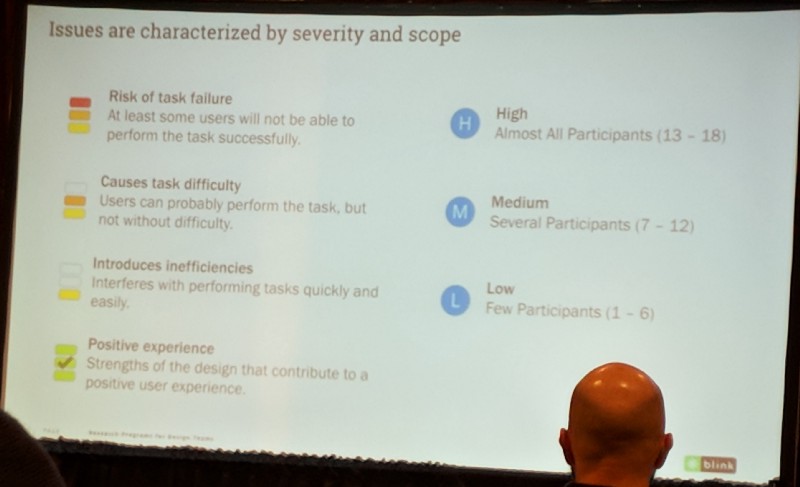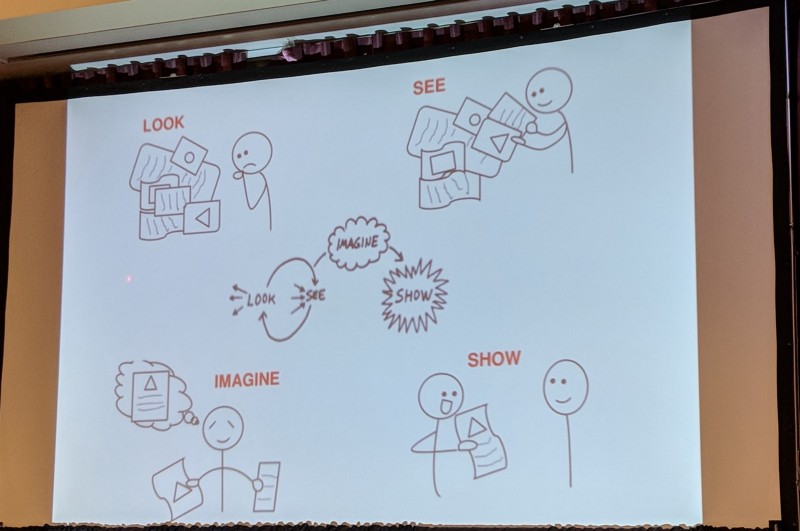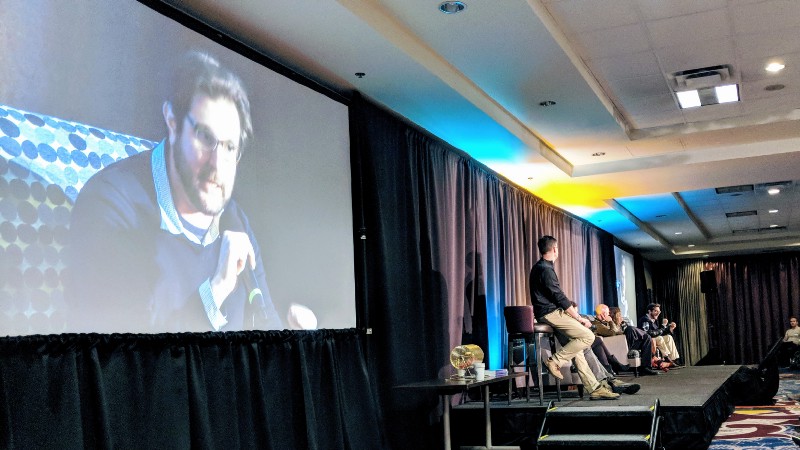ConveyUX 2018 — Day 1 (Workshops)
Published on Feb 28, 2018
Last year, I spent time at the UXPA conference in Toronto and did a series of posts that highlighted the talks and workshops I attended (Day 1, Day 2 and Day 3). This year, for ConveyUX 2018, I’ll be doing the same with a 5-point summary of each talk, along with any pictures of slides or internet references that I found particularly useful.
Today was the “workshop day” — which featured a choice of two workshops and a “Super Meetup” panel discussion…
Building Efficient and Informative Research Programs for Product Design Teams
Presented by: Geoff Harrison and Tom Satwicz
Design choices become clearer as evidence increases
- When a timeline is short, the number of participants and iterations decreases. When a timeline expands, the number of iterations and groups (not participants) should increase.
- When designing foundational research, match the Approach (e.g. objectives/questions and methodologies) and Protocol (Metrics, Scenarios, Questions, etc.) to the desired Outcomes (Journey Maps, Workflows, Personas, etc.) … and vice-versa!
- Use “high-level” charts and information visualizations to convey overarching insights from concept testing.
- Characterize issues by severity and scope. Mark them directly on the mockup/prototype/concept, if possible.
- Provide a table and/or spreadsheet — denoted with severity and scope — to indicate how many (and which) participants experienced the issue. These tools help communicate the necessity of a design decision or change.
 How you can visually denote severity and scope in reports/findings/outcomes
How you can visually denote severity and scope in reports/findings/outcomes
Building your Visual Facilitation Skills
Presented by: Leonardo Monteiro de Miranda
A facilitator… [must] focus primarily on creating conditions… For all presentations, it’s important to prepare the plan [and] set the rules.
- Look, See, Imagine and Show. These are the components of Visual Thinking.
- Everything we need to communicate visually can be drawn with the same basic shapes. A “Visual Alphabet” with which we can draw.
- Build a Personal Backlog that you can draw upon during sketches. Categorize keywords that communicate the essence of your product and practice them.
- Boring documents (like sprint retros, backlogs, etc.) can inspire more/better conversation by conducting the meeting with through visual communication.
- Our processes are simply tools with which we can communicate. From SQVID to design deliverables, our methods are only as useful as the conversations we have around them.
 The process of visual thinking. Note that you can look and see as much as you want before you dive into “Imagine”
The process of visual thinking. Note that you can look and see as much as you want before you dive into “Imagine”
The Evolution of UX Careers
Featuring: Peter Morville, Pamela Pavliscak, Dan Brown, Tamara Adlin and Geoff Harrison
Moderated by: Cory Lebson
If Dan is the dirty underbelly, I’m the corporate underpants. ~Tamara Adlin
- “The biggest UX problem we have is lack of focus and clarity at the top,” said Tamara. If business goals don’t exist, it’s up to UX to ask for them or write them ourselves.
- “Get great at writing,” Dan responded when asked about the most important skill for a UX career. If you do, you’ll elevate the practice.
- Geoff added on, “it’s not just talking about the profession…” you can write about anything — including how we communicate within organizations.
- “It doesn’t constrain you to know where the fences are,” Tamara began when explaining business goals as constraints, “it just lets you grow in a field with fences around it.”
- Dan and Geoff worked together to explain that it’s important to decide on your boundaries and where to hold them. To follow this explanation on how to “push back”, Peter added, “when you’re afraid of something ask yourself, what’s the worst that’s going to happen?”
You can explore the fear in one of two ways:
- Build your curiosity (ask “why”)
- Build a sense of adrenaline
… both help you face the fear and move past it.
 Dan describes his passion of “working together effectively” and the importance of “getting the right perspectives to the table”
Dan describes his passion of “working together effectively” and the importance of “getting the right perspectives to the table”
That’s all from Day 1! Please note that I may not have gotten all of the quotes right due to my inability to scribble at the speed of sound… If you attended the conference, do you have any notes to share? If you attended the same sessions as me, do you agree with my key takeaways? What did I miss?
If you’re just passing by on the internet, I’d love to hear what you think! Feel free to leave a comment and continue the conversation.
Until tomorrow,
Dani

